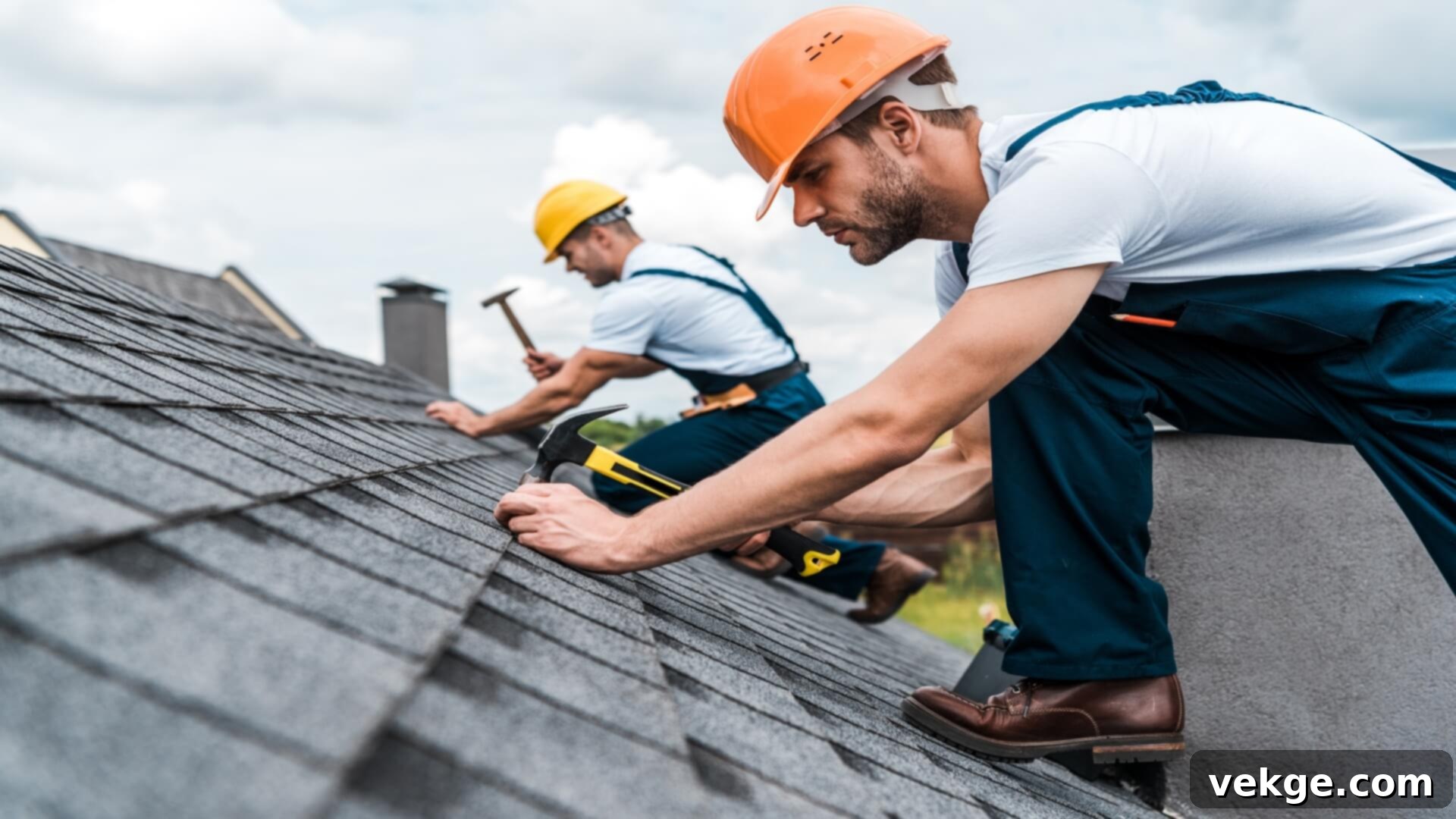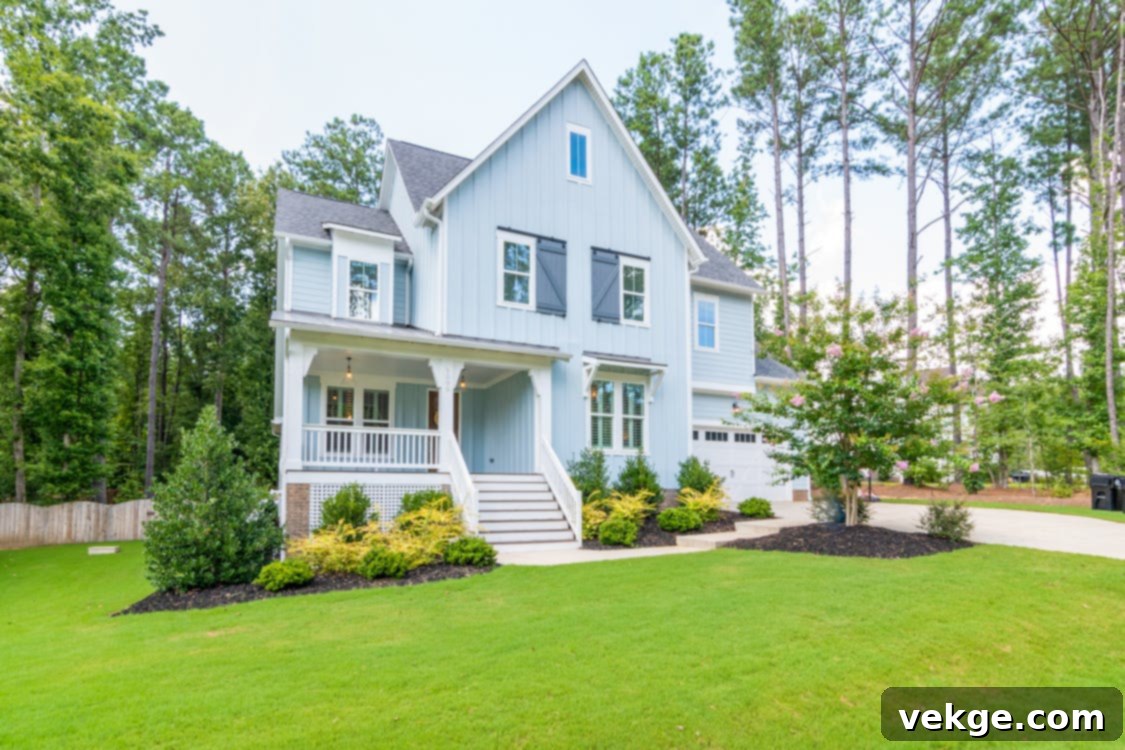Image Source
Proactive Home Exterior Maintenance: Your Guide to Lasting Curb Appeal & Protection
In today’s ever-changing world, homeownership comes with a modern philosophy: proactive care. Gone are the days of waiting until a problem becomes critical. Instead, savvy homeowners are shifting their focus to the exterior health of their homes, especially as unpredictable weather patterns become the norm and building materials face increasing demands. This new approach to home maintenance isn’t about chasing unattainable perfection; it’s about staying one step ahead, identifying and addressing minor issues before they escalate into costly repairs or significant inconveniences. By adopting a preventative mindset, homeowners can ensure their property remains structurally sound, visually appealing, and protected against the elements for years to come.
This proactive strategy often translates into tackling smaller, manageable projects throughout the year, rather than deferring all upkeep to a single, overwhelming overhaul. While tasks like cleaning, checking, replacing, and adjusting might not be glamorous, they are undeniably practical and essential for preserving your home’s integrity. A well-maintained facade or a freshly painted trim might be what catches the eye, but the true value lies in the consistent, behind-the-scenes effort that safeguards your investment. This comprehensive guide will walk you through key exterior maintenance areas, helping you understand how to protect your home from top to bottom.
Roof Repairs and Timely Replacement: Your Home’s First Line of Defense

The roof is arguably the most critical component of your home’s exterior, yet it’s often the most neglected until a noticeable problem arises. By then, hidden damage may have already progressed, potentially compromising your home’s structural integrity. Issues like a few missing shingles after a storm, subtle dips, or discolored streaks can be early warning signs that are easily overlooked from the ground. Regular visual inspections, even from a distance with binoculars, can help you identify these indicators early. Look for faded or cracked shingles, granule loss, moss or algae growth, or any changes in the roof’s profile.
While minor repairs can extend your roof’s life, there comes a point when replacement becomes the most cost-effective and secure option. Investing in a new roof is a significant decision, but modern roofing materials offer superior durability, enhanced energy efficiency, and extensive warranties, providing long-term peace of mind. Attempting to continuously patch a failing roof can lead to recurring expenses and potential interior water damage. When the time comes, hiring reputable roofers ensures the job is done correctly, using quality materials and professional installation techniques. This proactive investment safeguards your home against severe weather, improves energy performance, and significantly boosts its curb appeal and value. For this purpose, look up roof replacement company near me to hire the right one and secure your home’s future.
The Siding Needs Regular Cleaning: Protecting Your Home’s Skin
Your home’s siding acts as its protective skin, enduring constant exposure to the elements year-round. Over time, it inevitably accumulates pollen, dirt, mildew, algae, and various environmental pollutants. This gradual buildup doesn’t just look unsightly; it can accelerate wear and tear, diminish your home’s energy efficiency, and even harbor mold spores that can impact air quality. What once was a vibrant, crisp color can appear dull and faded, and textures may feel gritty or stained. In humid climates, mold and mildew can proliferate surprisingly quickly, making regular cleaning even more crucial.
When cleaning siding, it’s vital to choose the right method for your specific material. While a power washer can be effective, it must be used with caution. Excessive pressure can damage the siding, force water behind panels, or strip paint. Gentle cleaning solutions, soft brushes, and a standard garden hose are often sufficient for most materials, especially vinyl and painted wood. If using a pressure washer, opt for a wide-angle nozzle and lower pressure settings, always testing a small, inconspicuous area first. Whether you hire a professional cleaning service or tackle it yourself, the key is consistency. A thorough cleaning once or twice a year not only restores your home’s aesthetic appeal but also allows you to closely inspect the siding for any cracks, rot, or other underlying damage before it becomes severe. This simple routine protects your investment and maintains your home’s fresh, clean look.
Landscaping for Function and Look: Beyond Aesthetic Appeal

Effective landscaping extends far beyond creating a picturesque yard; it plays a critical role in protecting your home’s exterior and foundation. Unmanaged vegetation, such as overgrown bushes or tree limbs, can pose significant threats. When plants are too close to the siding, they can trap moisture against the house, leading to mold, mildew, rot, and paint damage. Tree branches scraping against the roof can abrade shingles, creating weak points that invite leaks. Furthermore, overgrowth near vents, gutters, and window frames can impede proper airflow, block drainage, and provide easy access for pests like rodents and insects into your home.
Regular landscape maintenance is a simple yet powerful preventative measure. This includes routine trimming of bushes and trees to maintain adequate clearance from your home’s structure, clearing dead branches, and ensuring gutters and downspouts are free from debris. Maintaining clear walkways and garden beds by pulling weeds also prevents moisture retention and improves visibility for inspections. By keeping your landscaping tidy, you not only enhance your property’s curb appeal but also significantly reduce the risk of water damage, pest infestations, and structural issues. This proactive approach makes it easier to spot cracks, leaks, or other problems with your home’s foundation or exterior before they become extensive and costly.
Fresh Paint for Trim and Shutters: A Shield Against Wear
While often considered purely aesthetic, the paint on your home’s trim and shutters serves a crucial protective function. These smaller features, including window frames, door frames, and decorative elements, are particularly vulnerable to weather exposure. Chipped, peeling, or faded paint not only makes the entire home look neglected but also leaves the underlying material exposed to the elements. For wooden trim, this exposure can lead to moisture absorption, swelling, rotting, and eventually structural damage. Metal elements can rust, and vinyl or composite materials can degrade more quickly without proper protection.
Regular touch-ups or a fresh coat of paint on trim and shutters act as a vital barrier against UV radiation, rain, and temperature fluctuations. Beyond protection, a well-maintained paint job significantly enhances your home’s curb appeal, contributing to a polished and cared-for appearance. When selecting exterior paint, prioritize high-quality, weather-resistant formulas designed for longevity. Modern paints often include features like UV protection, mold inhibitors, and superior adhesion, offering better resistance to peeling, cracking, and fading. Choosing the right sheen and color can also complement your home’s architectural style, adding to its overall charm and perceived value. This relatively small investment in time and materials can prevent more significant repairs down the line and keep your home looking its best.
Irrigation System Checks: Efficient Watering and Problem Prevention
Your home’s irrigation system is designed to keep your landscape healthy, but it’s often overlooked until problems become visible, like dry patches on the lawn or excessive pooling of water. A malfunctioning irrigation system can lead to significant water waste, unhealthy plant growth, and even damage to your home’s foundation if water is consistently misdirected. Common issues include clogged or cracked sprinkler heads, misaligned nozzles spraying water onto walls or sidewalks, and underground leaks that can go unnoticed for extended periods, especially after freezing temperatures or nearby excavation.
Implementing a routine system check is straightforward and highly beneficial. Activate each irrigation zone individually and walk the area to observe its performance. Look for sprinkler heads that are not popping up correctly, spraying erratically, or showing signs of damage. Check for consistent water pressure across all zones and listen for unusual hissing sounds underground, which could indicate a leak. Many minor repairs, such as replacing a broken sprinkler head or adjusting a nozzle, can be easily done with basic tools. For more complex issues, like major line leaks or controller malfunctions, consulting a landscaping or irrigation specialist is advisable. Proactive checks ensure efficient water use, promote a healthier landscape, and prevent potential water-related damage to your property, saving you money and hassle in the long run.
Chimney Wear and Tear: Overlooked Vulnerabilities
Even if your fireplace is rarely used, the chimney remains an integral part of your home’s exterior and requires regular attention. Exposed to the elements year-round, chimneys are susceptible to various forms of wear and tear that can compromise their structural integrity and allow water intrusion. Over time, mortar joints can crumble, bricks can loosen or crack, and the flashing – the metal seal where the chimney meets the roof – can pull away, lift, or rust. Any breach in these areas creates a direct pathway for water to seep into your home, leading to damage to the attic, ceilings, and internal walls, often without immediate visible signs.
A yearly inspection, ideally after the harsh winter months, is crucial for catching these problems early. From the ground, use binoculars to carefully examine the chimney’s exterior. Look for signs of deteriorated mortar, missing or cracked bricks, and any gaps or corrosion in the flashing. Check the chimney cap for damage or blockages, as this also protects against water and animal intrusion. While a ground-level inspection can provide valuable insights, a professional chimney sweep or masonry expert should be called for a more thorough assessment, especially if you notice significant damage or suspect hidden issues. This proactive check can prevent extensive water damage and ensure your chimney remains a safe and stable structure. For more on maintenance, learn how often should you clean your chimney.
Deck and Patio Upkeep: Extending Outdoor Living Spaces
Decks and patios are invaluable extensions of your living space, designed for relaxation and entertainment. However, without regular upkeep, these areas can quickly deteriorate, becoming unsafe and unsightly. Outdoor structures are constantly exposed to dirt, leaves, moisture, and fluctuating temperatures, which can accelerate wear and tear. Wooden decks, in particular, are prone to rot, warping, splintering, and moss growth if not properly maintained. Regular sweeping, cleaning, and resealing every few years are essential to protect the wood, prevent moisture absorption, and extend its lifespan. Check for loose railings, wobbly steps, and any cracked or soft boards that might pose a safety hazard.
Stone or paver patios also require attention. Weeds can sprout between pavers, disrupting the surface and potentially causing shifting or unevenness. Regular weeding, along with occasional pressure washing and re-sanding of joints, will keep your patio looking pristine and stable. Even composite decks, while low-maintenance, benefit from periodic rinsing to remove dirt and mildew and spot checks for any signs of damage. Addressing minor issues like a loose railing, a popping nail, or a stubborn stain promptly can prevent them from escalating into larger, more expensive repairs. Investing a few hours each season into deck and patio care ensures these outdoor spaces remain safe, functional, and inviting for years of enjoyment.
Window Cleaning and Inspection: Clear Views and Energy Efficiency
Clean windows do more than just improve your home’s appearance; they maximize natural light, enhance energy efficiency, and provide an opportunity for crucial inspections. Over time, windows can develop subtle issues that compromise their performance and lead to bigger problems. Fogging between panes indicates a broken seal, which reduces insulation and energy efficiency. Small cracks in the glass, peeling caulk, or deteriorating weather stripping around the edges can allow drafts, moisture, and even pests to enter your home. These issues often start small and can easily go unnoticed until they lead to significant energy loss or water damage.
Washing your exterior windows a few times a year offers a perfect opportunity for a visual inspection without needing specialized tools. As you clean, pay close attention to the glass for cracks or condensation, and inspect the frames and seals for any signs of degradation, such as peeling paint, rot, or gaps. Also, take this time to check your window screens. Tears, holes, or loose frames are common entry points for insects and can be easily repaired or replaced. Addressing these minor window issues proactively helps maintain your home’s thermal envelope, reduces energy bills, and protects your interior from the elements, all while keeping your views crystal clear. Over time, these small efforts contribute significantly to your home’s comfort and value.
Embracing a proactive approach to home exterior maintenance is a cornerstone of responsible homeownership. By spreading small, consistent efforts throughout the year, you can keep your home in optimal condition without it ever feeling like an overwhelming chore. This modern mindset shifts from reactive, costly repairs to preventative care, ensuring you notice and fix issues before they become major hassles. Not only does this save you money in the long run by averting expensive emergencies, but it also preserves your home’s aesthetic appeal, enhances its energy efficiency, and protects its overall value. Your home is a significant investment; diligent exterior maintenance is the best way to safeguard it for years to come, providing comfort, security, and lasting curb appeal.
